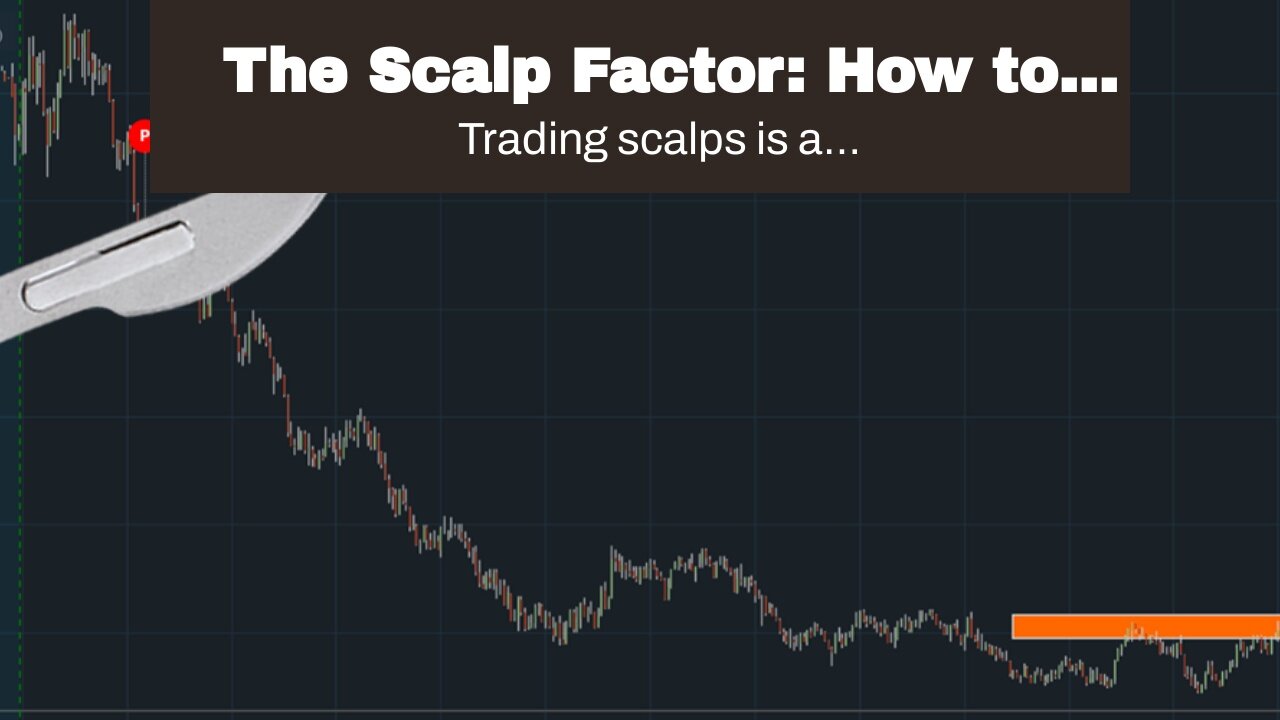Premium Only Content

The Scalp Factor: How to Make the Most of Your Trading Scalps
The Scalp Factor: How to Make the Most of Your Trading Scalps
Trading scalps is a critical part of any trader’s arsenal, and it can be hard to know where to start. Here, we take a look at the key components of successful scalping and how they work together to make your trading experience a success. Photo by Sohel Patel on Pexels What is the Scalp Factor.
The scalping factor is a measure of how profitable it is to trade a given stock. The higher the scalping factor, the more profitable it is to trade a given security. A lower scalping factor means that trading a security will be less profitable.
What...
https://finetimer.site/the-scalp-factor-how-to-make-the-most-of-your-trading-scalps/
Trading scalps is a critical part of any trader’s arsenal, and it can be hard to know where to start. Here, we take a look at the key components of successful scalping and how they work together to make your trading experience a success. Photo by Sohel Patel on Pexels What is the Scalp Factor.
The scalping factor is a measure of how profitable it is to trade a given stock. The higher the scalping factor, the more profitable it is to trade a given security. A lower scalping factor means that trading a security will be less profitable.
What Types of Scalps to Try.
There are many different types of scalpings, including in-the-money and out-of-the-money buys and sells. In-the-money scalping refers to buying a security at an earlier point in time than its current price and selling it at a later point in time, resulting in a net return on investment (ROI). Out-of-the-money scalping refers to selling a security at an earlier point in time than its current price and buying it back at a later point in time, resulting in no net return on investment (NOI).
How to Use the Scalp Factor.
How to Use the Scalp Factor To Choose The Right Security To Trade.
How To Use The Scalp Factor To Get The Best ROI On Your Trading Scalps.
How to Make the most of Your Trading Scalps.
The first step in making the most of your trading scalps is finding the right scalp. The best way to find a good scalp is to do some research on the stocks you plan to trade. By doing this, you can identify which companies have high demand and which stocks are undervalued.
Use the Scalp Factor to Buy and Sellstocks.
Once you’ve identified a company with a high demand for your stock, it’s time to use the scalp factor to buy and sell that stock. This means using a percentage of your profits derived from trading that stock to buy other stocks in the order you choose, based on how well that particular stock is performing currently.
Keep Your Trading Strategy Regular.
If you want to make money while trading, keep things systematic – meaning that you follow a regular trading plan) so that your profits stay consistent and low throughout the year!
Tips for Successful Trading Scalps.
One of the most important things you can do to succeed in trading scalps is find a time when your trade is at its best. If you’re trying to make long-term money, it’s important to schedule your trades in such a way that allows for profitable opportunities.
You can use a variety of methods to trade scalps, but some of the most popular ones include limit orders and buy and hold strategies. When using limit orders, specify a specific amount of shares that you want to buy or sell, and then place the order as soon as possible. This will ensure that you don’t miss out on any offers or potential profits.
Similarly, when trading stocks, it’s important to stay organized and disciplined. Try not to start Trading until You feel comfortable with the techniques used and have a good understanding of the stock market. Make sure also to keep track of your profits and losses so that you can quickly adjust your strategy if necessary.
Use the Right Technique.
When trading stocks, it’s important to use the right technique for each individual stock. For example, if you are buying a stock, it’s best to use an automated system like Motif Market or TradeStation (www.tradestation.com). This will allow you to easily enter transactions and track your progress without having to worry about how the stock appears onscreen or what else is going on in your portfolio.
Likewise, if you are selling a stock, it’s best practice to use a technical analysis tool like Robinhood (www.Robinhoodonline.com). This will allow you to see how the share price changes based on specific factors like supply and demand patterns.
Stay organized and disciplined....
-
 5:25
5:25
FineTimer
2 years agoThe Merit Circle: How to Get the Most Out of Your Teachers and Learning Opportunities!
645 -
 LIVE
LIVE
vivafrei
10 hours agoEp. 292: Bondi's Betrayal & Comey Judge Caught Lying! Crooks Acted Alone? Judicia Activism & MORE!
15,245 watching -
 LIVE
LIVE
MattMorseTV
38 minutes ago🔴Trump is BRINGING the CHARGES. 🔴
545 watching -
 LIVE
LIVE
TheSaltyCracker
35 minutes agoTreason Season ReeEEStream 11-23-25
9,488 watching -
 LIVE
LIVE
EricJohnPizzaArtist
4 days agoAwesome Sauce PIZZA ART LIVE Ep. #70: Movie Night featuring Dark Helmet!
267 watching -
 LIVE
LIVE
GritsGG
3 hours ago#1 Most Warzone Wins 4015+!
1,467 watching -
 LIVE
LIVE
Due Dissidence
7 hours agoTrump SMITTEN By Mamdani, MTG RESIGNS, Hurwitz DOUBLES DOWN on CENSORSHIP, RFK Jr "Poetry" EXPOSED
1,072 watching -
 39:40
39:40
Tactical Advisor
4 hours agoUnboxing New Tactical Packs | Vault Room Live Stream 046
48.3K5 -
 LIVE
LIVE
elwolfpr
2 hours agoElWolfPRX Enters the Storm: First Winds
60 watching -
 14:59
14:59
MetatronHistory
18 hours agoAncient Bronze Was Not the Way You Think
21.1K7